


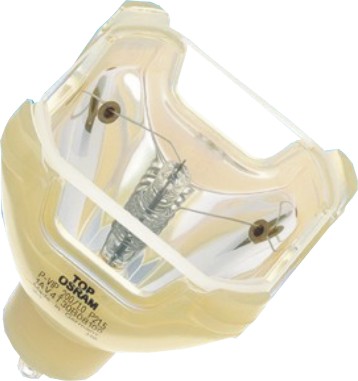
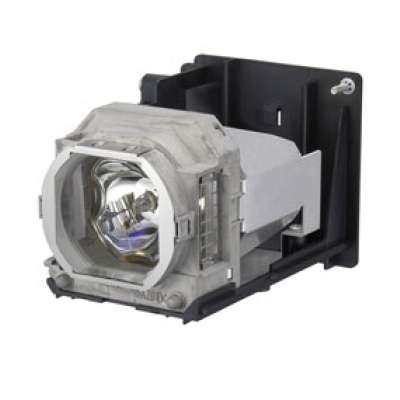


Home theater used to be reserved for the rich and famous, but technology has evolved and prices have dropped to the point where true home theater is now achievable for the masses. In fact once you get a home audio system in place and add a 1080p projector you will never want to set foot in the local cinema again.
Today's 1080p projector is seeing continued technological improvements. If you think of projectors in terms of what you see projected on the wall at a business meeting or at your local church service, you are in for a pleasant surprise. A home HD projector properly connected to a high definition source such as HDTV or particularly blu-ray produces a stunning image.
So if you are ready to take your home theater to the next level consider checking out the following popular 1080p projectors:
1. Epson Home Cinema 1080UB - What sets the Epson apart from those in its class is the deep, dark blacks that it is able to achieve, thus the UB for Ultra Black. The 1080UB has an excellent sharp picture, vivid colors and has many flexible placement options due to its strong zoom and lens shift capabilities. The Epson may not be the most "film like" projector out there, but it is a natural choice for those who want to use the projector for viewing HD sports as well as for movies.
2. BenQ W5000 - For those who prefer a DLP projector over an LCD, the W5000 is certainly worthy of consideration. DLP projectors are known for smooth images, strong brightness levels and deep blacks. The W5000 does not disappoint in these areas. While technology has limited the problem over the years, it is still important to be aware of the potential for the rainbow effect that some people have with DLP technology.
3. Panasonic PT-AE2000 - If you are looking for an all around performer the AE2000 may be the choice for you. It offers an incredibly smooth picture with no visible pixel structure, even when viewed up close. It has a very film like image making it an ideal choice for movie lovers, but also is bright enough for HDTV and gaming and has flexible placement options making it suitable for many locations.
4. Mitsubishi HC5500 - This 1080p projector is another popular home HD projector capable of producing an excellent picture on the big screen. It has a sharp image, good color and above average brightness. Its expected lamp life is longer then the competition which figures into the overall value of the projector. Keep in mind that the HC5500 is a bit more limited then some in terms of placement due to a less powerful zoom and limited lens shift.
Each of these fine 1080p projectors would be a fine addition to your home theater. A home theater with one of these home HD projectors will be sure to amaze your family and friends. Just be prepared to be asked to host more movie nights and football parties because of your home theater setup.

It is usually recommended that manufacturer's originals, rather than unbranded copies, are used when replacing Hitachi projector lamps. Poorly produced alternatives are often short-lived, thus negating any savings you've made. Worse still, they can be dangerous.
Hitachi projector lamps are subject to very high levels of quality control. This is essential when you consider how projector lamps are made. The bulb contains mercury vapour, which is contained under pressure. Imagine the prospects if this glass suddenly exploded, releasing its contents into the air (or worse still, into the face of the person using it); Hitachi projector lamps have a lifetime guarantee against such things happening.
Projectors can be expensive to repair when they go wrong; luckily, replacing the lamp is one of the few maintenance projects users can undertake themselves.
You should remember that a projector lamp is far more than just a bulb. Hitachi projector bulbs are sold as a unit which comprises several elements. These include an ARC tube containing highly pressurised mercury vapour; a quartz reflector, fittings and wiring and the external housing. This is only a very simple outline; the current that activates the mercury vapour, for example, is regulated by electrical ballasts, which supply exactly the right voltage to ignite and sustain the bulb's output while in use.
Original components are made of top quality materials and manufactured to exacting standards. The reflector, for example, is a hard quartz globe lined with highly reflective material. To hold the ARC tube in place, the base is filled with extra-strength caulking material. The mercury vapour in the arc tube is compressed at ultra-high pressure to exactly the right level. All this means expensive technology and a team of expert engineers and scientists, whose role is to ensure the mercury vapour will ignite correctly, and that the tubes, reflectors and wiring assembly are structurally sound.
Hitachi projector lamps vary in their output of lumens. This means machinery must be recalibrated for each specific model - precise calibration is essential. The highly specialised nature of manufacturing and the cost of the production machinery and materials, means there are very few manufacturers of high-quality Hitachi projector lamps in the world.
However, this does not mean you are stuck with buying a "manufacturer's own" labelled product. There are online companies selling both manufacturers' originals and alternative lamps for the same projector models. The bulbs and other working parts can be manufactured to the same quality standards as the originals. In fact, in many cases the bulb is the same - it's simply the housing, packaging and non-working hardware that are different. "Unbranded" bulbs are often made by known professional lighting manufacturers such as Phillips or Osram.
Provided you go to a trusted and reputable retailer, it is possible to buy copycat Hitachi projector lamps which are every bit as good as the manufacturer's original. Those worried about invalidating their projector's warranty can rest assured that neither copyright nor warranty is affected in any way.


The lamp is the integral part of any projector, so this is one area you can't afford to skimp on - although it doesn't have to be as expensive as you might think. Original Toshiba projector lamps are precision made to exacting standards - currently, there are only four or five manufacturers worldwide making high quality projector bulbs - so it makes sense to purchase one recommended by the manufacturer, rather than a cheap and inferior copy.
If this makes you balk, you can make substantial savings by buying your Toshiba projector lamps online, from a supplier endorsed by Toshiba. To bring costs down further, these same suppliers often sell duplicate lamps as well as manufacturer's originals. These are not always inferior products; they can be as good as the real thing, but use different materials (such as the housing, packaging etc). The important part - the bulb - will either be a Toshiba original, or a top quality alternative from a manufacturer such as Osram or Phillips.
The things to look out for are suspiciously cheap "Toshiba projector lamps" packaged to look like the original and delivered from a foreign supplier. On closer inspection, these lamps are often fake and have not passed the rigorous quality controls imposed upon genuine alternatives. They are illegal, and often dangerous; nobody wants to have a mercury vapour bulb explode in their face. Yet this is what can happen if you buy projector bulbs from a disreputable source.
Of course, you can't "see before you buy" online, which is why it's so important to only use sites endorsed to sell the original product. If they also sell replica projector lamps, these should be clearly packaged to reflect this fact and you should always get a full guarantee and "no quibble" returns policy, whichever brand you choose.
When you see how projector lamps are made, it's easy to see why they're so dear. This is not a high yield, bulk-consumable product. Mercury vapour bulbs are designed to last a long time, and replacements have a finite lifespan (owing to the possibility of loss of pressure over time, leading to a duller output). Consumer demand is therefore quite low, meaning Toshiba projector lamps are made in relatively small batches. The machinery is very expensive, and since it is used throughout the entire Toshiba range it must be carefully reset and recalibrated for each batch. The process uses exotic raw materials, such as quartz glass and mercury. It is also extremely labour intensive, with a team of specialist scientists and engineers overseeing quality control, calibration and more.
Toshiba projector lamps are sold as a sealed unit, complete with the housing and lens. Replacement of the ARC bulb alone is a highly specialised process and outside the realm of DIY. In fact, the housings are made so they can't be dismantled. There are numerous reasons for this - the main one being safety. The arc tube is sealed with mercury vapour at ultra-high pressure. Mercury is essentially hazardous, as is exploding glass. Buying bulbs in sealed units ensures safety of both user and machine. It also ensures that Toshiba projector lamps run 100% efficiently, with efficient wiring and a scratch-free reflector.

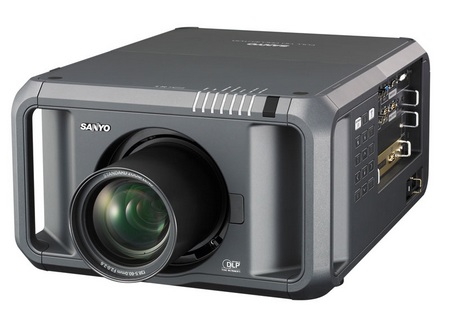

Depend on type of presentation you can select either LCD projector or DLP projector. For static presentation like PowerPoint LCD projectors are good but for moving images or video DLP projectors gives better quality. If you are looking for portable solution then LCD projector is not suitable in that case DLP projectors are best.
Brightness is another factor while choosing Projectors 5000 lumens is brightest while 1000 lumen is entry level projector. 6000 lumens projectors are best for Trade shows and convention centers when you are targeting thousands of visitors. Most commonly used projectors are 2000-3000 lumens. Higher the lumens costlier it becomes also weight increases.
Sanyo PLC XF45 10000 Lumens LCD Projector
Resolution - 1024 x 768 XGA
Brightness - 10,000 ANSI Lumens
Weight - 81.6 LBS
Dimensions - (W x H x D) Inches 22.9W x 30.8D x 9.9H inches
Lamp 4 lamps - 240W each
Projection Lens - Dependent on Selection of Standard Zoom or Short Throw Wide Angle Lens
Inputs - Multiple
Outputs - Multiple
Digital Correction - Plus Minus 40 degrees
Aspect Ratio - 4:3
Contrast Ratio - 1100:1
Power Lens Shift - Yes
Which is better LCD projector or DLP projector?
Both are different technologies LCD is Liquid Crystal Display and DLP is Digital Light Processing.
LCD offers bright and sharp picture with vibrant, rich colors in comparison to DLP projectors.
LCD projectors produce higher lumen outputs than DLP.


Projectors are important in business. It is used to display facts and figures to possible investors, partners or the board of directors. It can also be used to entertain and amaze your audience while conducting a presentation. The old models may not be that user-friendly but it has greatly evolved already. Aside from the low-technology that old projectors offer, they are now an inconvenience for business travelers.
Low-end projectors have low projection quality, low picture quality, big and heavy. The other aspects of a low-end projector can be forgiven. The big and heavy part is a major inconvenience for buyers. Such gadgets must at least be either of the two, not big or not heavy. For this reason, the newer models addressed these concerns. Lightweight series projectors are now ready and out in the market.
Among the lightweight projectors out in the market, these are the best lightweight projectors: Hitachi CPX2 LCD Projector, Optoma Technology EP7155 DLP Multimedia Projector, and NEC NP50 Projector.
Hitachi CPX2 LCD Projector
This projector is one of the durable brands that the electronics industry is copying. This Japan-made projector will take you into a lot of business presentations and ventures. The resolution of this projector is 1024 x 768 (XGA) and HDTV compatible. The contrast ratio is 500:1, 2000 lumens for brightness and the aspect ratio is 4:3. It has an audio socket both for headphones and Line In, a video output, 2 USB ports, 1 SD card slot and an Ethernet both for cabled and wireless varieties.
The light source type is a UHB Lamp, a power of 160W and a life for 3000 hours. This projector only weighs 4.1 pounds, 2.6 in. in height, 10.8 in. in width and 8.1 in. depth. The product has a 1 year limited warranty. This projector ranges from $ 739.95 to $1,014.95.
Optoma Technology EP7155 DLP Multimedia Projector
This projector delivers a high quality images. This can be perfect in displaying a colorful presentation. The resolution is 1024 x 768 (XGA). This is a digital light processing type of projector. The contrast ration is 2500:1, an aspect ratio of 4:3 (standard) and 16:9 (widescreen). It has 4 video outputs: RCA, S-Video, VGA, and DVI. It also has a USB port and an Audio output. The brightness is 2500 lumens.
The light source type is SHP (Super High Pressure) Lamp, a power of 200W and a life for 2000 Hours. It has a 1W mono built-in speaker. It only weighs 1.5 kilograms or 3.2 pounds. Its size is 8.7"W, 2.8"H and 7.0"D. It is available at the price of $999.
NEC NP50 Projector
This projector has the best usefulness deal. This projector functions almost like an automatic type. It can detect which source is plugged-in. It automatically adjusts its colors and it shuts down by itself. The resolution is 1024 x 768 (XGA) up to 1600 x 1200 (XGA). The brightness is at 2600 lumens, a contrast ration of 1600:1 and an aspect ration of 4:3. This projector is also made with DLP technology.
Its lamp is 200W and can last for 2000 to 3000 hours. It has all the analog video format and 3 analog video output (RGB, S-Video, Composite Video). It has a remote control. Its special feature is the security lock slot password protected. It has a 3 year limited manufacturer's warranty. It only weighs 3.5 pounds. Its size is 9.7"W, 7"D, and 2.8"H. The price of this projector ranges from $934- $1312.
You are probably wondering on how you can save money if the prices of these projectors reach up to a thousand dollars. Surprisingly, money is not the only thing you can save with these lightweight projectors. You can save time and effort as well. You can even save yourself from the danger that a big and heavy projector might cause you. You might be able to save your business through a hassle-free projector. You can save more from a low maintenance projector. This is an investment that can lead you to more financial opportunities.



Latest surveys reveal that people prefer new technologies when it comes to buying a new TV set. This means that few people still buy traditional cathode tube TVs and more and more people buy either LCD TVs, or rear projection TV sets. However, when it comes to rear projection TVs, there are two aspects that should be discussed: these TVs offer the largest available screen sizes for affordable prices and at great image quality. However, using a projection TV lamp to display the image on the screen itself, it means that sooner or later you will need to replace the TV's lamp.
If you have ever looked at a rear projection TV's specifications, you may have noticed among its features the lamp's lifespan. Manufacturers use the latest technologies to provide you with longer lamp lifespan, but this still means that projection lamps do not have an infinite life. Newer projection TV lamps use halogen instead of incandescent lamps, halogen lamps that work at much higher temperatures, leading to a shorter lifespan. There is a pro side though, as halogen lamps provide a much powerful and bright light than incandescent lamps, making your image sharper and more intense.
Rear projection TV sets use the same technologies used in overhead projectors: the image is transmitted with the help of a complex array of lamps, mirrors and switches to the screen itself. The main difference is that in the case of rear projection TV sets, the distance between the lamp and the screen is much shorter. While overhead projection lamps have a declared lifespan of several hundred hours (in the case of halogen lamps, this lifespan reduces to around 70 - 90 hours), the lamps inside your television can last for several thousand hours of around the clock operation.
When it comes to replacing the projection TV lamp, it all depends on how you perform the operations. These lamps are very sensitive items, so taking great care of them while replacing them can determine their lifespan. Mitsubishi engineers recommend you not to touch the lamp's contacts or the lamp's glass at all, as you can leave debris or oil o these delicate surfaces, damaging them. Any debris will burn when the lamp reaches its maximum operating temperature, causing potential danger to your set.
Always buy the same type of lamp as the TV's manufacturer specifies, as buying lamps that operate at different voltages or power emissions can also damage your brand new television. You will find all the necessary information about the required projection TV lamp in the documentation supplied by the TV's manufacturer together with the unit. The department store from where you have purchased it can offer you a whole series of compatible replacement parts for your TV set.
Your projection TV lamp's lifespan can depend on many variables and specialists say that most of the defects affecting these lamps are due to human error, so taking care of your TV can offer you a significant increase in lifespan.

In terms of multimedia presentations, LCD projectors have proven to provide impressive image quality and high resolutions. However, if your projector suddenly fails to work and you need to present a proposal with potential clients, it could cause your business to lose money, or worse, it could cause your job.
The most common problem of projectors is the sudden burn out of LCD projector lamps. Fortunately, these LCD projector lamps can be easily replaced. Although anyone can replace the lamps for your LCD projector, choosing the lamp can be an overwhelming task. You need to ensure that the type of lamp you buy is compatible with your projector.
A high-quality LCD projector lamp should be able to operate for over 4,000 hours. However, the measurements of lamp life are not reliable because the lamp can still work, even if it becomes dimmer. For this reason, you need to check the "peak lamp life" listed in most manufacturers of LCD projector lamps, which provides users with information of the total brightness a particular lamp could provide.
Choosing a high-quality lamp for your LCD projector should be your first concern, instead of price. Compared to the affordable halogen lamps that last about 70 hours, metal halide lamps can work up to 500 hours. Meaning, the more expensive LCD projector lamp you choose, the longer-lasting life it would provide.
How to Choose an LCD Projector Lamp
There are only two types of lamps used in LCD projectors - metal halide and tungsten halogen. In order to choose a quality lamp, you have to understand how each one works.
A metal-halide lamp provides better brightness, but lower consumption of power. Be aware that lamp wattages do not reflect the brightness. Metal-halide LCD projector lamps are more efficient because it could provide your projector with a very white light until the end of its life.
On the other hand, tungsten-halogen lamps produce whiter lights because it runs at a higher temperature than other lamps. Although the white light will become yellow during its lifetime, it provides a longer lamp life because of its low-pressure and high temperature features.
Although metal-halide LCD projector lamps are more expensive, they could provide over 2,000 hours compared to the tungsten-halogen lamps' 70 hours of operation. Be aware that lamps of your projectors could last longer when you operate them in "economy mode", which automatically cools down when the projector becomes idle.
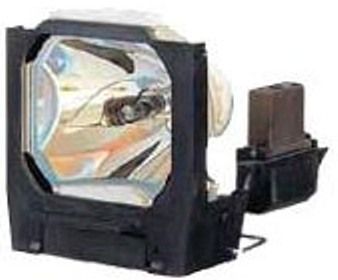

The InFocus LP530 projector is exceptionally brilliant considering its size and price, providing an amazing combination of compact size, light weight, excellent brightness, and outstanding video quality. Weighing less than 7 pounds and projecting a 2,000 ANSI lumen image with XGA (1,024 x 768) resolution, the LP530 has a powerful 400:1 contrast ratio, which makes it perfect for both those heavy duty charts in board meetings and playing your favorite videos at your leisure.
The LP530 is much less noisy than other projectors and at only 34 db, you might not notice any noise at all! The LP530 features advanced connectivity, offering additional display styles, connectivity options and multimedia functions. InFocus provides a two-year warranty.
Product Description
The InFocus LP530 gives you much more than other projectors at a lower cost. This projector meets your conference room and mobile needs - at a price that won't break your budget. It comes with an expansion module that you can easily snap on in order to transform your everyday board meeting into an exciting, action packed presentation. The InFocus LP 530 is great for those that are watching their budget, however you should note that the InFocus LP530 is no longer in production. That means that while you may have a hard time tracking this bad boy down, you will love the extensive features that it offers you considering its one of the cheapest models you'll ever find. Extremely portable and versatile, this compact projector will exceed your expectations by providing you with both a business class projector and a wonderful home theater all in one package. Now, with the LP530, you can be the talk of the town with your brand new home theater projector! The LP530 features 2000 ANSI lumens of astounding image perfection, so it only has the highest quality every time. Users will enjoy the freedom of entering any board meeting and give smooth, perfect presentation no matter what the lighting is like in the room. The InFocus LP530 also includes an interesting lamp-saving feature, alternating between standard and low power modes so that you can expect the maximum amount of hours of lamp light on your projector. The LP530 is best for small businesses and schools that need plenty of projectors but don't want to spend a fortune on them

It is usually recommended that manufacturer's originals, rather than unbranded copies, are used when replacing Hitachi projector lamps. Poorly produced alternatives are often short-lived, thus negating any savings you've made. Worse still, they can be dangerous.
Hitachi projector lamps are subject to very high levels of quality control. This is essential when you consider how projector lamps are made. The bulb contains mercury vapour, which is contained under pressure. Imagine the prospects if this glass suddenly exploded, releasing its contents into the air (or worse still, into the face of the person using it); Hitachi projector lamps have a lifetime guarantee against such things happening.
Projectors can be expensive to repair when they go wrong; luckily, replacing the lamp is one of the few maintenance projects users can undertake themselves.
You should remember that a projector lamp is far more than just a bulb. Hitachi projector bulbs are sold as a unit which comprises several elements. These include an ARC tube containing highly pressurised mercury vapour; a quartz reflector, fittings and wiring and the external housing. This is only a very simple outline; the current that activates the mercury vapour, for example, is regulated by electrical ballasts, which supply exactly the right voltage to ignite and sustain the bulb's output while in use.
Original components are made of top quality materials and manufactured to exacting standards. The reflector, for example, is a hard quartz globe lined with highly reflective material. To hold the ARC tube in place, the base is filled with extra-strength caulking material. The mercury vapour in the arc tube is compressed at ultra-high pressure to exactly the right level. All this means expensive technology and a team of expert engineers and scientists, whose role is to ensure the mercury vapour will ignite correctly, and that the tubes, reflectors and wiring assembly are structurally sound.
Hitachi projector lamps vary in their output of lumens. This means machinery must be recalibrated for each specific model - precise calibration is essential. The highly specialised nature of manufacturing and the cost of the production machinery and materials, means there are very few manufacturers of high-quality Hitachi projector lamps in the world.
However, this does not mean you are stuck with buying a "manufacturer's own" labelled product. There are online companies selling both manufacturers' originals and alternative lamps for the same projector models. The bulbs and other working parts can be manufactured to the same quality standards as the originals. In fact, in many cases the bulb is the same - it's simply the housing, packaging and non-working hardware that are different. "Unbranded" bulbs are often made by known professional lighting manufacturers such as Phillips or Osram.
Provided you go to a trusted and reputable retailer, it is possible to buy copycat Hitachi projector lamps which are every bit as good as the manufacturer's original. Those worried about invalidating their projector's warranty can rest assured that neither copyright nor warranty is affected in any way.


Projectors, especially the high end home theatre models represent a significant purchase including the replacement cost of the projector lamp, which will eventually need replacement. For the novice, selecting the right projector for themselves is a journey which in many cases results in a wrong decision.
It is best to become at least a little bit educated about what the options are and the strengths and weaknesses of the different types of projectors on the market. High Definition projectors are now available and the standard choice, given the future of high definition broadcasts. There are basically three types of high definition projectors: LCD (liquid crystal display) HDTV projector, DLP (digital light processing) HDTV projector, and the newest  , the LCOS (liquid crystal on silicon) HDTV projector.
, the LCOS (liquid crystal on silicon) HDTV projector.
An LCD projector produces a brighter sharper image but at certain resolutions and size of the image, pixilation may occur. A DLP projector will give better black levels (provides a better image when the image is a night seen or of an indoor scene in an dim room), although the image details are usually less sharp.
While price is a very important factor in selecting a projector, it is important to make sure the model selected will meet you picture viewing and other needs.
Other considerations include: 1. what will be the room light conditions, as rooms with un-shaded windows will require a higher lumens rating; 2. if the unit will be ceiling mounted, will air conditioning be available as hot air rises and excessive heat may lessen the projector fan's ability to cool the lamp; 3. type of bulb may vary between UHP - Ultra High Performance, UHE - Ultra High Efficiency (most common), or metal halide lamps; 4. how many and what type of connection ports there are; and 5. what size projector do you need (if portability is involved).
While the cost of a DLP HDTV projector ranges around $2,000 or more, an LCD HDTV projector generally is less than $2,000. Recently LCOS HDTV display has become popular given its higher resolution of 1920x1080 internal resolutions, although the cost of $5,000 to $20,000 may be prohibitive.

For a long time, projector owners had no choice but to buy replacement Sanyo projector lamps from the manufacturer via their high street retailer, or by post. This was a slow and expensive exercise. Also, there were a lot of Sanyo projector bulbs to choose from, meaning only the most popular models were kept in stock. You might have to wait for weeks until your lamp came in.
Two things have happened recently to change this. The first was the arrival of online stores. These are usually free from the confinements of storage depots and warehouses, and can order Sanyo projector lamps - plus numerous other brands - direct from the wholesaler. The second was the rise in manufacturers supplying genuine, quality alternatives to Sanyo's own lamps. These are made to the same high standards as the originals, and in fact are often purchased from the same OEM.
OEM means original equipment manufacturer. Owing to the highly specialised nature of the product, there are only a handful of faculties making projector lamps across the globe. Each will supply a number of companies, such as Sanyo, Toshiba, Sony etc, working from the blueprints supplied by those companies. They also supply lamps to o.
These products are not fakes. They are identical to the manufacturer's originals in everything but name. Often, the same bulbs are used. Otherwise, a trusted name such as Osram or Phillips manufactures them. There are two types of Sanyo lamp: one is heavily marketed and boasts media-winning packaging. The other comes in a plain wrapper without the frills. But either way, inside the box is a Sanyo-quality product.
So, why are projector lamps so special? They are sold as an integrated unit, comprising a number of delicate and specialised components. The key to all this is an ARC tube filled with mercury vapour at very high pressure. This is ignited and then maintained by a complicated system of electrical ballasts, designed to give optimum light without risk of the bulb overheating or exploding. Pressurisation of the bulb and calibration of  ballasts is subject to intense quality control in both Sanyo original, and alternative brand lamps.
ballasts is subject to intense quality control in both Sanyo original, and alternative brand lamps.
The one thing you must be sure of, when looking for value Sanyo lamps online, is to go to a supplier selling both branded originals and alternative replacements. These suppliers are authorised dealers for Sanyo (although always check) and will never knowingly sell fake, badly manufactured bulbs. Avoid any site that is selling so-called Sanyo projector lamps for ridiculously low prices. Making projector lamps is a precise and exact science; thus there has to be a "cut off point" price-wise.
Be particularly wary of very low cost "manufacturer's originals" on sites not offering an alternative. They will tell you that, with prices this low, why would you want to buy Sanyo projector lamps from anyone but Sanyo themselves? The truth is they are not from the OEM that supplies Sanyo projector lamps. They most certainly are not manufacturer's originals. At best, they are badly put together reconditioned items that are potentially dangerous to both you and your projector.
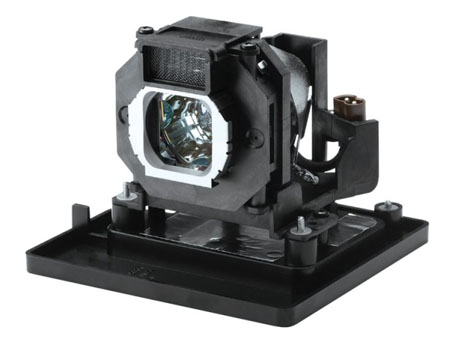
There are many reasons for people buying digital projectors,one of the main is for the cost per image area. The benefits to buying a projector is the vast image size, however the are some limitations which effect the quality of image. The main things to compare are the resolution, brightness, and contrast ratio. There are many different types of projectors available and finding the best one to suit you is not always easy.
* The different types of projectors include:
* Home Theatre/ Cinema Projectors
* LCD (Liquid Crystal Display) Projectors
* Digital Projectors
* Conference Room Projectors
* Portable Multimedia Projectors
Home Theater/Cinema Projectors provide home entertainment,they can be used for many purposes, including playing movies, DVDs, music, video games aswell as much more. They usually use DLP (Digital Light Processing) to create a smooth high video performance, with little pixelation and high contrast ratios.
LCD Projectors provide clearer, sharper images than most of their counterparts, they create images by shining light through three small LCD panels which are very vibrant and sharp in colour. LCD projectors can be used to for movies at home aswell as for presentations. Ideally they need to be used in dimly light rooms to produce quality images.
Digital Projectors allow the user to use video files on their PC and makes internet viewing very effective. There are two types of projectors to choose from, DLP and LCD. When buying digital projectors one important factor to look for is the amount of lumens. This is the quantityof different aspects of light that are available at one time.
Conference Room Projectors are mainly used to give presentations and reports in conference rooms mostly. They are used where high resolution graphics are necessary. Ideal for medical presentations or with high detailed artwork.
Portable Multimedia Projectors are very light for ease of portability. These types of projectors are able to produce noise-free presentations with fairly accurate images.
When buying digital projectors the main keypoints to focus on are:
-Resolution- refers to the pixel density of the projected images, Projectors have two resolutions, the natural resolution and the maximum resolution. The natural resolution is the standard pixel size of the image. The maximum resolution is the maximum capability of the projector. Digital projectors should be able to accept resolutions of 800×600, 1024×768 or 1280×1024, however it is the natural resolution of the projector that is important. The higher the natural resolution of the projector the greater the colour density image.
-Lumens- refer to the brightness of the image. Simply put the higher the lumens the brighter the projection. They are usually lower for home theatre models than for office models. Screen size will affect how many lumens will be needed. If the contrast ratio is low however, your image will look washed out. Lumens typically range from less than a 1000- least expensive but low light output, needs to be used in a dark or dimlylight room. To 3000+ extremely bright and expensive. Anywhere between 1000-2000 would be sufficient for most tasks.
-Throw Distance- refers to the maximum amount of distance your projector can project. Most digital projectors will have a ample throw distance for most home and conference use. To find out what this is go to the projectors manufacturers website.
-Contrast Ratio- refers to the difference between the white level (light) and black level (dark). Digital projectors with the higher ratios will have the most well-defined pictures.
-Lamp Life- the average lamp life for digital projectors is between 1500 and 3000 hours.
Other things to consider when buying digital projectors is price, design,weight and any other extra features.
Some of the most popular brands include Sony, Panasonic, Sharp, Sanyo, Epson aswell as many others.
* The different types of projectors include:
* Home Theatre/ Cinema Projectors
* LCD (Liquid Crystal Display) Projectors
* Digital Projectors
* Conference Room Projectors
* Portable Multimedia Projectors
Home Theater/Cinema Projectors provide home entertainment,they can be used for many purposes, including playing movies, DVDs, music, video games aswell as much more. They usually use DLP (Digital Light Processing) to create a smooth high video performance, with little pixelation and high contrast ratios.
LCD Projectors provide clearer, sharper images than most of their counterparts, they create images by shining light through three small LCD panels which are very vibrant and sharp in colour. LCD projectors can be used to for movies at home aswell as for presentations. Ideally they need to be used in dimly light rooms to produce quality images.
Digital Projectors allow the user to use video files on their PC and makes internet viewing very effective. There are two types of projectors to choose from, DLP and LCD. When buying digital projectors one important factor to look for is the amount of lumens. This is the quantityof different aspects of light that are available at one time.
Conference Room Projectors are mainly used to give presentations and reports in conference rooms mostly. They are used where high resolution graphics are necessary. Ideal for medical presentations or with high detailed artwork.
Portable Multimedia Projectors are very light for ease of portability. These types of projectors are able to produce noise-free presentations with fairly accurate images.
When buying digital projectors the main keypoints to focus on are:
-Resolution- refers to the pixel density of the projected images, Projectors have two resolutions, the natural resolution and the maximum resolution. The natural resolution is the standard pixel size of the image. The maximum resolution is the maximum capability of the projector. Digital projectors should be able to accept resolutions of 800×600, 1024×768 or 1280×1024, however it is the natural resolution of the projector that is important. The higher the natural resolution of the projector the greater the colour density image.
-Lumens- refer to the brightness of the image. Simply put the higher the lumens the brighter the projection. They are usually lower for home theatre models than for office models. Screen size will affect how many lumens will be needed. If the contrast ratio is low however, your image will look washed out. Lumens typically range from less than a 1000- least expensive but low light output, needs to be used in a dark or dimlylight room. To 3000+ extremely bright and expensive. Anywhere between 1000-2000 would be sufficient for most tasks.
-Throw Distance- refers to the maximum amount of distance your projector can project. Most digital projectors will have a ample throw distance for most home and conference use. To find out what this is go to the projectors manufacturers website.
-Contrast Ratio- refers to the difference between the white level (light) and black level (dark). Digital projectors with the higher ratios will have the most well-defined pictures.
-Lamp Life- the average lamp life for digital projectors is between 1500 and 3000 hours.
Other things to consider when buying digital projectors is price, design,weight and any other extra features.
Some of the most popular brands include Sony, Panasonic, Sharp, Sanyo, Epson aswell as many others.


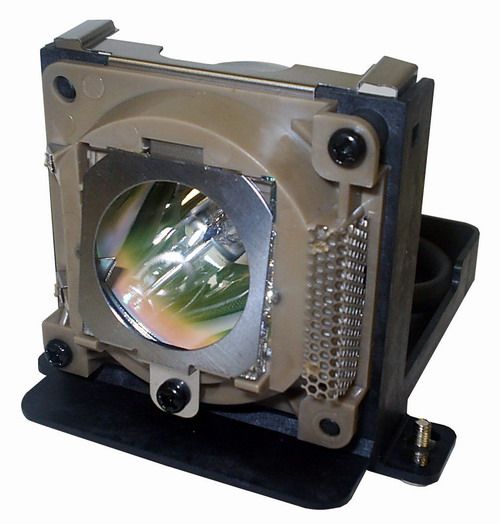
In terms of multimedia presentations, LCD projectors have proven to provide impressive image quality and high resolutions. However, if your projector suddenly fails to work and you need to present a proposal with potential clients, it could cause your business to lose money, or worse, it could cause your job.
The most common problem of projectors is the sudden burn out of LCD projector lamps. Fortunately, these LCD projector lamps can be easily replaced. Although anyone can replace the lamps for your LCD projector, choosing the lamp can be an overwhelming task. You need to ensure that the type of lamp you buy is compatible with your projector.
A high-quality LCD projector lamp should be able to operate for over 4,000 hours. However, the measurements of lamp life are not reliable because the lamp can still work, even if it becomes dimmer. For this reason, you need to check the "peak lamp life" listed in most manufacturers of LCD projector lamps, which provides users with information of the total brightness a particular lamp could provide.
Choosing a high-quality lamp for your LCD projector should be your first concern, instead of price. Compared to the affordable halogen lamps that last about 70 hours, metal halide lamps can work up to 500 hours. Meaning, the more expensive LCD projector lamp you choose, the longer-lasting life it would provide.
How to Choose an LCD Projector Lamp
There are only two types of lamps used in LCD projectors - metal halide and tungsten halogen. In order to choose a quality lamp, you have to understand how each one works.
A metal-halide lamp provides better brightness, but lower consumption of power. Be aware that lamp wattages do not reflect the brightness. Metal-halide LCD projector lamps are more efficient because it could provide your projector with a very white light until the end of its life.
On the other hand, tungsten-halogen lamps produce whiter lights because it runs at a higher temperature than other lamps. Although the white light will become yellow during its lifetime, it provides a longer lamp life because of its low-pressure and high temperature features.
Although metal-halide LCD projector lamps are more expensive, they could provide over 2,000 hours compared to the tungsten-halogen lamps' 70 hours of operation. Be aware that lamps of your projectors could last longer when you operate them in "economy mode", which automatically cools down when the projector becomes idle.
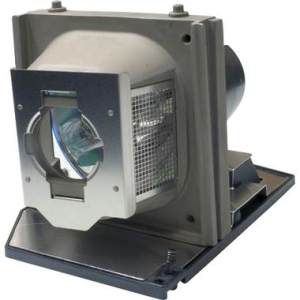

The heart of the projector is its lamp, which is its primary component. This lamp is accessible in most of the models behind the projector door, for easy replacement. At times projectors come equipped with two lamps, both of which function together, or one may take over when the other one fails. You may have come across the term UHP when purchasing a projector. This stands for Ultra High Pressure lamps which are commonly used in projectors, the other lamps are metal halide, and, for larger and upper range projectors, Xenon lamps. Xenon lamps give better color images than metal halide, but need more energy to operate and have a lower life span. What is being called the lamp is actually an entire lamp module comprising of the bulb, the reflector both encased in housing with leads for power reception.
There is an integrator which receives the light of the bulb which is thrown on it by the reflector, through a system of lenses. It is a very efficient system that processes the image to appear sharp and all the pixels are uniformly illuminated without wastage of light. The reflector is designed to process all the light optimally. This is a very sophisticated system which a layman does not need to understand, but, I am given to understand that many papers are written about the system by technical people dealing with the science of optics and photography.
What a end user of the projector needs to know and understand is that the reflector concentrates the light from the projector bulb through a series of lenses or a single lens so that as much light as possible can be delivered on the screen, so that we get extremely sharp and life like images.
Bulb size and the problem with stray light rays
The manufacturers noticed problems arising from stray light rays. These, since they were not directed directly on the screen, reduced the efficiency of the projector by striking various other walls of the projector and also leaking through the vents. If they escaped the projector they could strike the screen in various places affecting the image and the color. So innovative minds worked at this problem and found a solution, which is to reduce the source of the light. The theory is that smaller the light source, smaller the leakage, hence the size of the projector bulbs started getting reduced.
Innovative ways to make the small bulb create a great illumination have been adopted. For instance metal halide lamps have a gas filled gap through which light is created. However this has led to unwanted tungsten deposits that darken the lamp and reduce its brightness. UHP lamps were introduced by Philips which employs a pure mercury vapor arc under extremely high pressure to create illumination. The arc gap is smaller than the halide gas filled gap, and sidesteps the tungsten deposit problem. It also creates much better light.

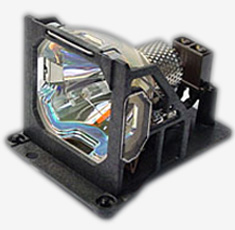

© 2009 Projector Lamps